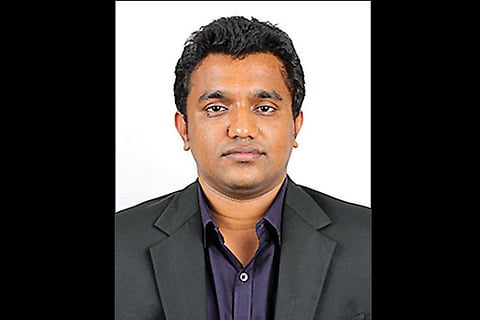

Chennai
Dr. T. Jeyaprabhu, research advisor to the Salem government engineering college and founder director of the Chennai based IAAC research centre wrote to Robert Gutro, Deputy News Chief of NASA’s Hurricane page at the Goddard space flight center on December 12 stating that images captured through his method matched those retrieved by NASA’s satellites.
He said that his instruments had pinpointed a tropical cyclone in the southern Indian Ocean on December 7 while NASA’s satellite along with those of Europe, Japan and India captured the same cyclone only December 10. His letter stated that “in one of our recent researches on Ecosystems and Weather forecasting, our system found climatic changes occurring in the southern part of Indian Ocean, the root cause for the largest rainfall in India’s rainfall history.” He added that on December 2, 2015, Chennai city recorded highest rainfall for the past 100 years.
Similarly, Jeyaprabhu’s system revealed a storm brewing near the Philippines on December 9 whereas NASA satellites were able to do so only on December 12. Dr. Gutro’s reply on December 15 stated that he was passing on the information to Dr. Edward Olsen of the Atmospheric InfraRed Sounder (AIRS) instrument team at NASA’s JPL (Jet Propulsion Laboratory) responsible for creating storm imagery using AIRS data.
However, the letter’s tone indicated that NASA scientists were incredulous as to how a scientist from a developing country could beat the NASA’s satellites. When asked, Dr. Jeyaprabhu said this was possible through a System which he had created at an estimated Rs.4 crore.
Located in Sathyamangalam in Erode district, his creation named “Kaalam” (time) was based on Einstein’s theory of relativity and used information from the ecosystem, environment, climate and weather forecasts of the earth’s composite data.
The system could forecast climatic changes globally in advance despite not using satellite or telecommunication technology. The system predicted drastic weather changes through observation of the Transfer/Conversion Rate of nature’s minute Particles.
Though Dr. Jeyaprabhu wrote to Dr. Olsen, the latter is yet to reply. It may be recalled that Dr. Jeyaprabhu was instrumental in locating the Coast Guard’s missing Dornier aircraft when the government approached him after exhausting other sources. Similarly, he was also called on to pinpoint the location of a Malaysian airlines flight which vanished over the sea.
Visit news.dtnext.in to explore our interactive epaper!
Download the DT Next app for more exciting features!
Click here for iOS
Click here for Android